The Power rating of a resistor can be said as the maximum amount of power that the resistor can withstand. The resistor power rating is the specification given to a resistor other than the ohms 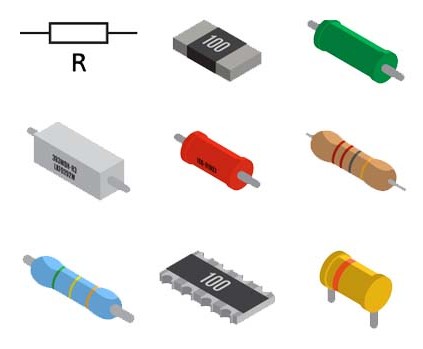 value. If a resistor has a power rating of 1W, then we should not feed more than 1W to the resistor.
value. If a resistor has a power rating of 1W, then we should not feed more than 1W to the resistor.
When an electrical current passes through a resistor due to the presence of potential difference across it, electrical energy is lost in the form of heat energy by the resistor. If the current flowing through the resistor is less, the heat evolved would be negligible and if the more current is applied, the amount of heat would be more.
Thus, sometimes the power rating of a resistor can also be said as the amount of heat element can dissipate for an indefinite time. If the power does not exceed the wattage of the resistor, then there is no degradation in the performance of the resistor.
But if the power supplied to the resistor exceeds its maximum power rating then it will melt the resistor and go up in smoke and thus damages the circuit. Most resistors have their maximum resistive power rating given for an ambient temperature of 70 degrees Celsius.
Units of Power rating
The power rating unit of a resistor is calculated in Watts. The electrical quantity watt is denoted by capital letter “W”. Most resistors have power ratings in terms of watts. But sometimes we come across the power rating like mW, kW or MW.
mW is an abbreviation of Milli Watt. 1mW = 1 / 1000 W.
kW is the abbreviation of Kilo Watt. 1kW = 1000 W.
MW is the abbreviation of Mega Watt. 1MW = 1000000 W.
Power rating Calculation
The Power rating formula of a resistor can be calculated by the simple equation which includes the voltage and current been applied to the resistor.
P = V× I
Power is the product of voltage and current applies to the resistor.
If the current applied to the resistor is 1A and the voltage supplied is 12V and the resistor is working happily, then the power through the resistor will be
P = 12 × 1 = 12W
Thus this resistor will work nicely without any degradation in performance at 12W. However maximum power i.e. power rating can be 15W, 16W, or anything above 12W.
Now by going further, we will need the Ohm’s law which is
V = I × R
So we can write the formula of power as
P = V × I
P = I ×R × I
P = I2 × R
If we know the value of resistance and the current flowing through it, we can easily find the power.
If the value of resistance of the resistor is 100 ohms and current applied is 0.5A, then the power will be
P = 0.25 × 100
P = 25W
Thus the power through the resistor would be 25W.
But what if we don’t know the value of current flowing but the voltage supplied. Then again we will need Ohm’s law
P = V × I
P = V × V/R [because I = V/R]

If the value of the voltage supplied is 6V and the value of the resistor is 30 ohms, the power would be
P = 6 × 6/30 = 6/5W
Thus, the power across the resistor would be 6/5W.
Resistor Wattage
The power rating or wattage rating of the resistor mainly depends upon the physical size of the resistor. If the size of the resistor is large the power rating would be more and it mostly depends on the surface area of the resistor.
Resistors that exceed their maximum power rating tend to go up in smoke, usually quite quickly, and damage the circuit they are connected to. If a resistor is to be used near to its maximum power then some form of a heat sink or cooling is required.
The power dissipation of the resistor is the main thing that one should examine while using the resistor in certain circuit applications. One should check the power supplied by the source every time before connecting resistors. Resistors shall blow up and, they will damage the other parts of the circuit which is not viable.
Most of the resistors we use are 1/2W, 1/3W, 1/4W, and 1/8W for low voltage applications. The below figure shows the power derating curve. This curve shows how the resistor power rating falls as its temperature rises.
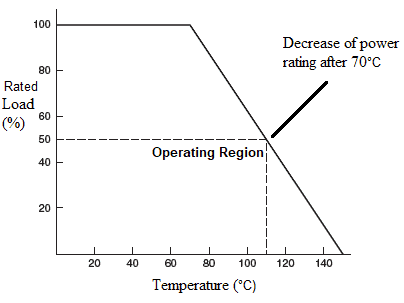
The power rating of a resistor falls after 70°C temperature. Hence, it is necessary to select proper resistor wattage for the given application. Typically, from the temperature above 100°C high wattage resistors are preferred.
Conclusion
The wattage rating relies on the dimension of the resistor also. The power dissipation starts with heat rise in temperature and the wattage also increases. For higher voltage applications, power wire wound resistors have a good power rating and they are specially designed to work at temperatures above 300°C for a shorter period of time.

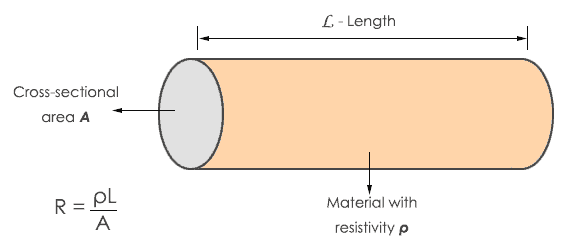
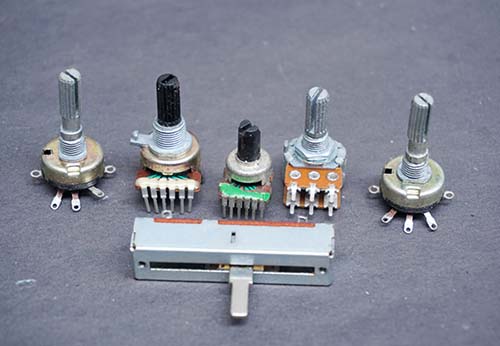
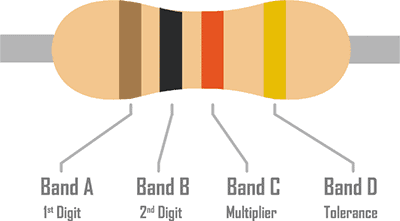
Could a resistor that is rated to handle 10000 watts of power be used in a 1 watt circuit?